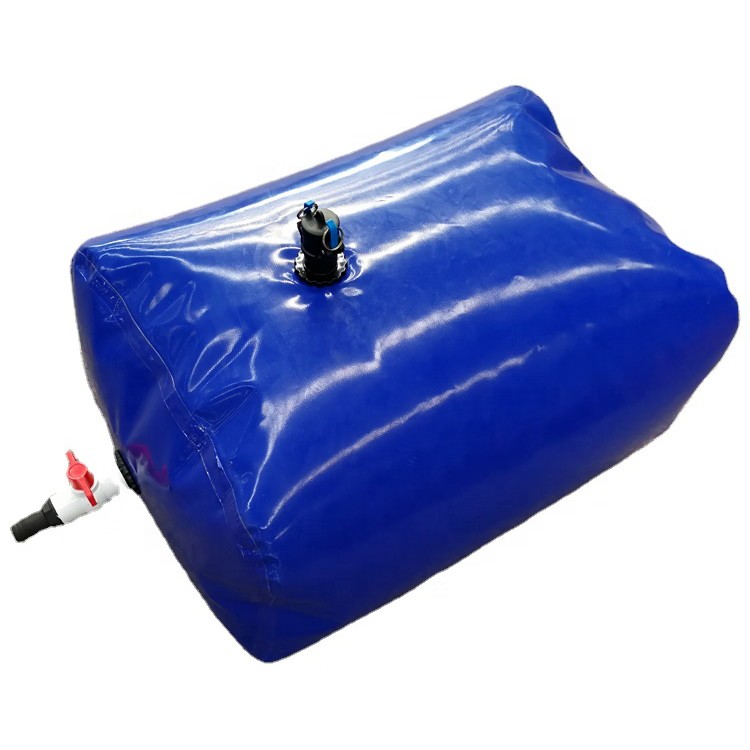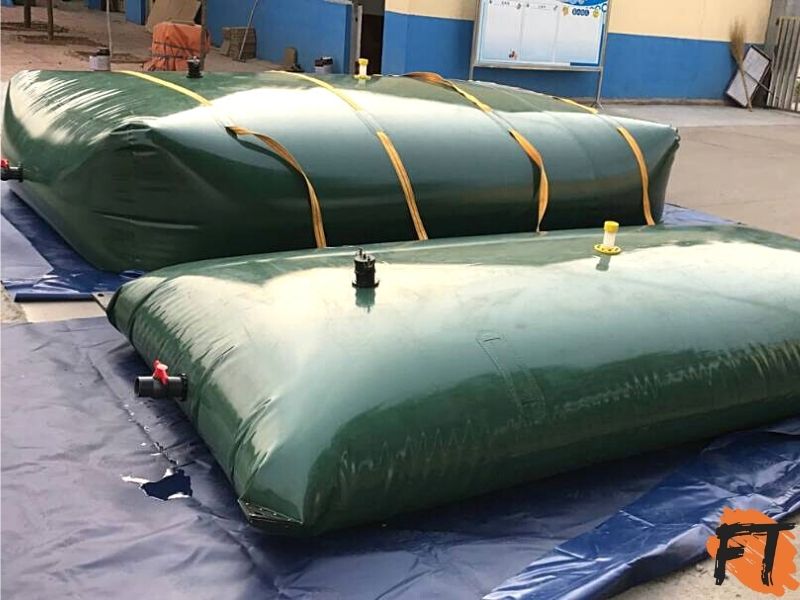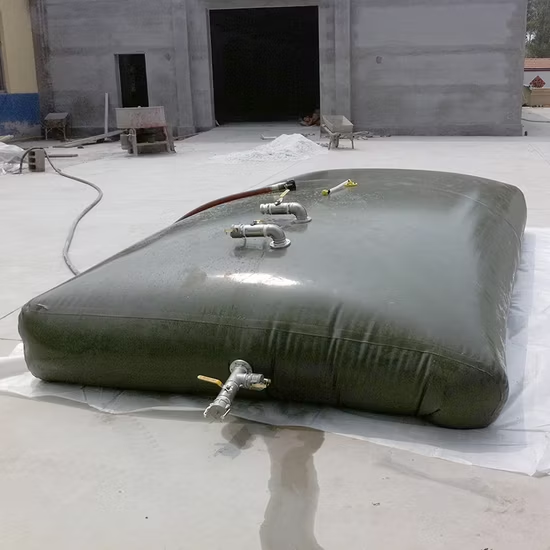Potable Water Storage Bladder
Cube flexible PVC water storage bladders are innovative, space-saving solutions for storing potable water, rainwater, or other liquids in residential, commercial, and industrial applications. Made from high-strength, UV-resistant PVC material, these bladders are durable, puncture-resistant, and suitable for both indoor and outdoor use. Their cube-shaped design maximizes storage capacity while minimizing footprint, making them ideal for tight spaces or temporary installations. Easy to transport, set up, and dismantle, they provide a portable and reusable storage option. With excellent resistance to weather, chemicals, and microbial growth, cube flexible PVC water storage bladders offer a reliable, cost-effective, and convenient liquid storage solution.
Description
When safe drinking water is needed in remote locations, emergency situations, or industrial sites, a potable water storage bladder offers a practical and reliable solution. These flexible tanks are designed to hold clean water without contaminating it, making them essential for both short-term and long-term storage.
Unlike rigid tanks, bladder tanks (also called pillow tanks or flexible tanks) are collapsible, portable, and adaptable to various terrains. They are widely used in military camps, humanitarian relief operations, rural communities, and even private households that need temporary water storage.
What is a Potable Water Storage Bladder?
A potable water storage bladder is a flexible container made from food-grade reinforced fabric such as TPU (thermoplastic polyurethane) or PVC (polyvinyl chloride). The material is strong, UV-resistant, and safe for drinking water storage.
These bladders are designed to:
-
Expand when filled with water.
-
Collapse when empty, making them easy to transport.
-
Keep water clean thanks to non-toxic liners and sealed seams.
Key Benefits
-
✅ Portability – Can be folded, carried, or airlifted to hard-to-reach areas.
-
✅ Quick Setup – Can be deployed within minutes without heavy machinery.
-
✅ Safe for Drinking Water – Made with certified food-grade materials.
-
✅ Space Efficient – Collapsible when not in use, unlike rigid tanks.
-
✅ Custom Capacities – Available from 100 liters to over 250,000 liters.
Typical Applications
-
Emergency Relief – During natural disasters, clean water supply can be deployed quickly.
-
Military Operations – Armies worldwide use bladder tanks for temporary camps.
-
Remote Communities – Rural villages and off-grid locations use them where piped water isn’t available.
-
Construction Sites – Provides water for workers in temporary camps.
-
Agriculture – Used for irrigation or livestock drinking water.
Market Insights & Statistics
The global demand for flexible water storage systems, including potable bladders, has been growing steadily.
| Metric | Value | Notes |
|---|---|---|
| Global bladder tank market size (2024) | USD 1.2 billion | Includes potable water and industrial bladders |
| Forecasted market size (2030) | USD 2.0 billion | CAGR ~7.1% |
| Average lifespan | 5–15 years | Depending on fabric, use, and care |
| Common capacities sold | 500 – 50,000 liters | Widely used sizes for emergency & residential needs |
| Top users | Aid agencies, defense, construction | Driving large-volume demand |
Factors Affecting Potable Water Storage Bladder Price
-
Capacity – Larger bladders cost more but offer economies of scale.
-
Material Type – TPU bladders are more expensive than PVC but last longer.
-
Usage Frequency – Temporary bladders may be cheaper than heavy-duty models designed for repeated use.
-
Accessories – Valves, inlets, and protective ground covers may add to cost.
-
Transport & Shipping – Lightweight but large-capacity bladders may incur higher logistics costs when shipped internationally.
Choosing the Right Bladder
When buying a potable water storage bladder, consider:
-
Capacity Needs – Estimate daily consumption and duration of use.
-
Deployment Area – Bladders require level ground free from sharp objects.
-
Water Safety Certification – Ensure it meets NSF/ANSI or equivalent potable water standards.
-
Durability vs. Budget – Decide between short-term PVC and long-term TPU options.
-
Maintenance Plan – Proper cleaning and storage extend service life.
-
FAQs
1. How long can water be stored in a potable water bladder?
Generally, potable water can be safely stored for weeks to months, depending on temperature and hygiene practices. Regular monitoring is recommended.2. Can potable water storage bladders be reused?
Yes. With proper cleaning and storage, high-quality bladders can be reused multiple times over several years.3. What sizes are available?
They range from 100 liters for personal or household use to over 250,000 liters for industrial and humanitarian operations.4. Are bladder tanks durable?
Yes. TPU bladders can last 10–15 years, while PVC options typically last 5–10 years with good care.5. Where are potable water bladders most useful?
They are especially valuable in disaster relief, military, rural communities, and temporary construction sites where transporting rigid tanks is impractical.




Reviews
There are no reviews yet.